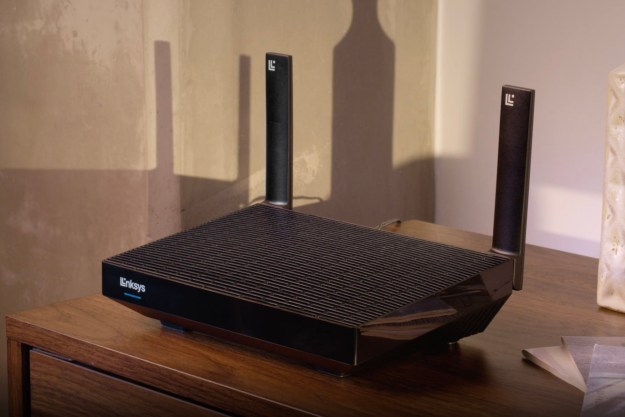
After releasing the Nighthawk AX8 in November 2018, Netgear is again expanding its lineup and launching another Wi-Fi 6 router, the Nighthawk Tri-band AX12. Available in May 2019 for $600, the router allows for maximum Wi-Fi performance on smart home devices and offers everything needed for gaming, streaming, and other high -bandwidth applications.
Under the hood of this new 12-stream, AX11000 Wi-Fi router is a powerful quad-core 1.8GHz processor, which enables blazing-fast 10.8GBps Wi-Fi speeds and a 2.5G multi-gig ethernet interface as either a LAN or WAN. For mobile devices, the new router supports Gigabit Wi-Fi, as well as interface-free channels with dynamic frequency selection. It pairs with its support for Dynamic Quality of Service (QoS), which helps improve the router’s internet traffic-management capabilities by resolving traffic congestion when internet bandwidth is limited.
In terms of design, the antennas on board are hidden inside the wing and optimally positioned for the best range. For ease of setup, the router also is wall-mountable, allowing it to be set out of the way in a home or office. There is even support for three dedicated Wi-Fi bands — fast, faster, and fastest — and a feature known as “Smart Connect” that allows it to automatically categorize devices. A mobile “Nighthawk App” is also available, allowing users to easily set up, control, and monitor a home network.
The new Nighthawk Tri-band AX12 joins a small selection of Wi-Fi 6 routers that are currently available for purchase. The list includes the Asus RT-AX88U and Asus ROG Rapture GT-AX11000, as well the D-Link AX6000. Also recently announced, at CES 2019 in January, is a futuristic-looking TP-Link router.
As we’ve previously noted, the Wi-Fi 6 standard brings lower latency and shorter delay times as data is sent across the network. Without even upgrading internet speed, Wi-Fi 6 also supports MU-MIMO technology, which is able to make networks more efficient. Importantly, battery life can also be improved on Wi-FI 6 compatible devices.
Though the list is still a bit short, several devices already support the Wi-Fi 6 standard. This includes the new Samsung Galaxy S10 as well as the ThinkPad, X390, and X390 Yoga. You can expect more devices and routers to come on board with the new standard through the remainder of the year.
Editors' Recommendations
- How to change your router’s Wi-Fi password
- Google Nest Wi-Fi Pro adds Wi-Fi 6E but loses compatibility
- This dongle can bring a superfast Wi-Fi 6 connection to your old computer
- Wi-Fi 7 officially hits 5Gbps, five times the speed of your current router
- Intel could give us Wi-Fi 7 devices long before Apple gets around to it


